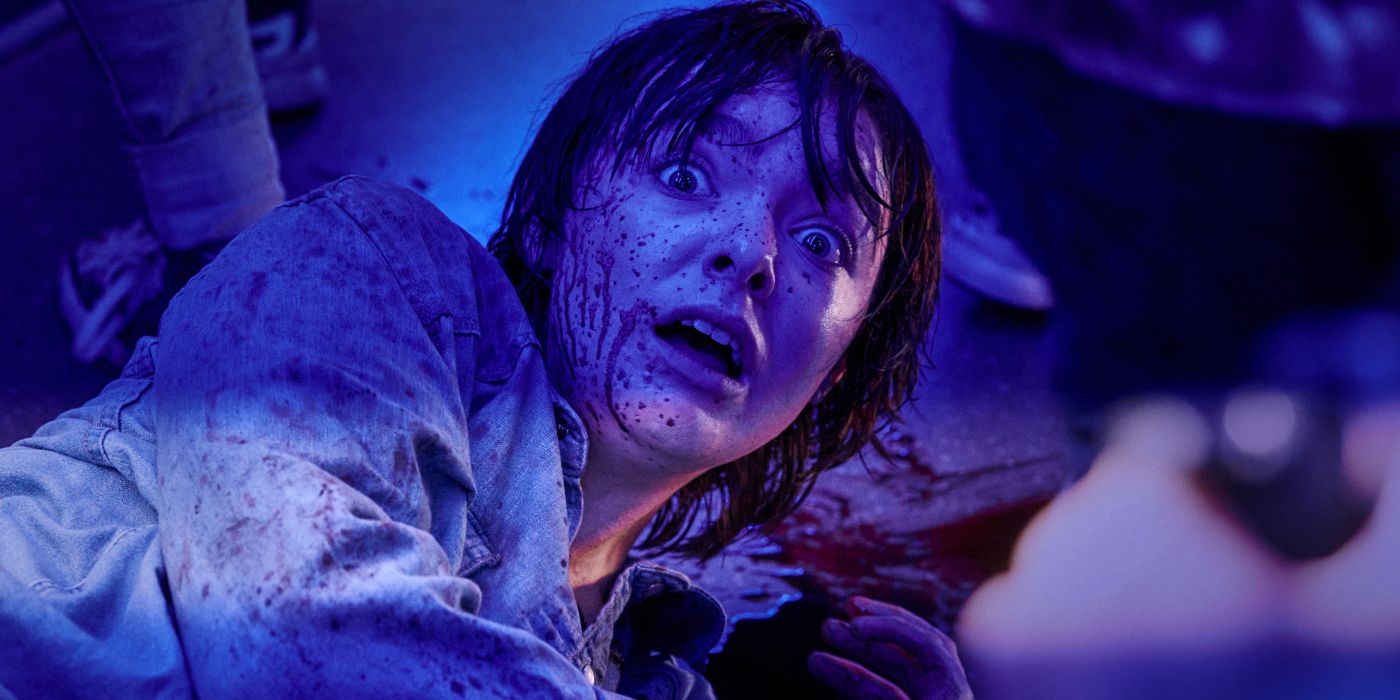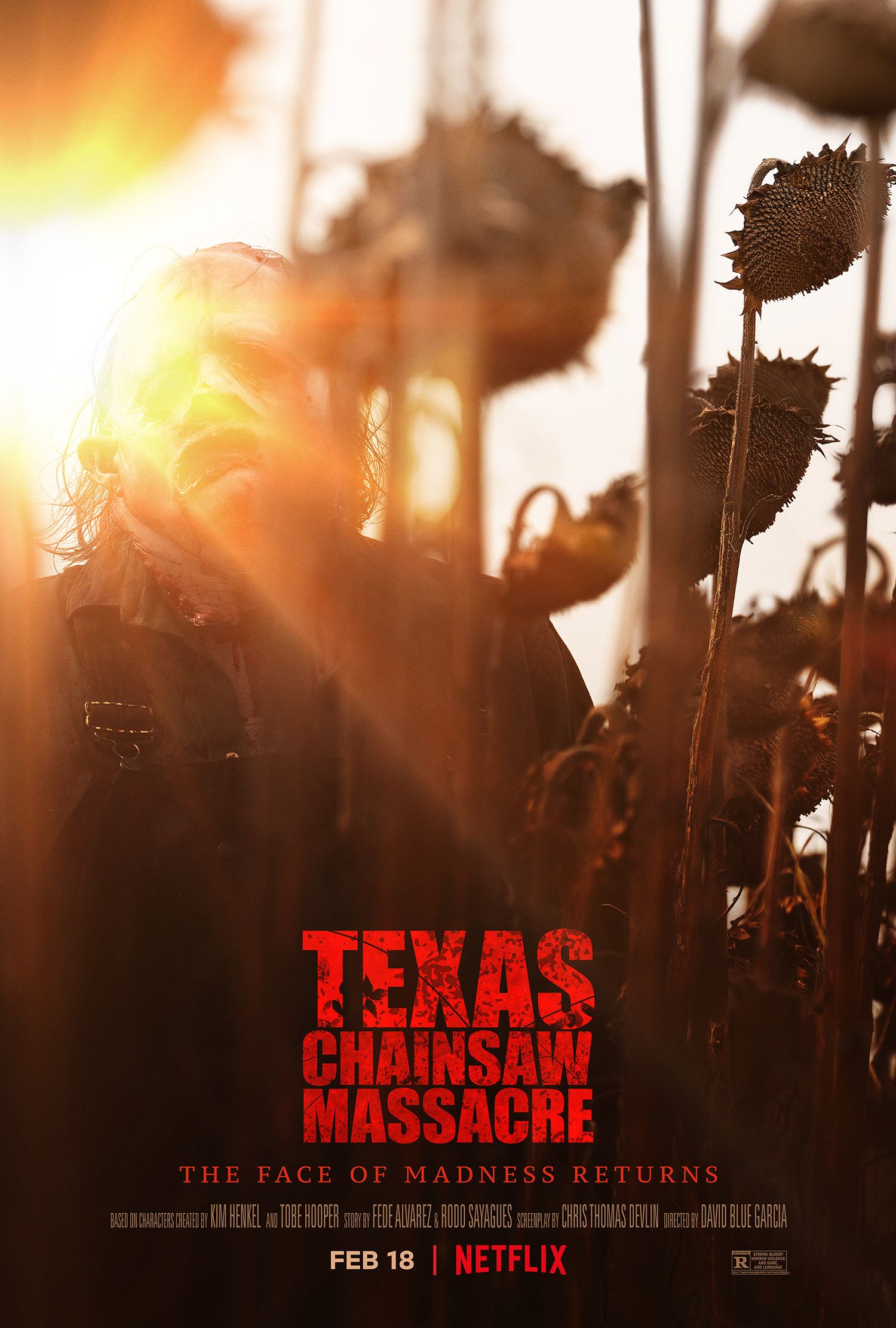Tobe Hooper’s 1974 Texas Chain Saw Massacre is a triumph in the horror-slasher genre for endless reasons. Be it the haunting, stomach-churning portrayal of the Sawyer family, a silent, macabre masked cannibal wielding a chainsaw under the Texas sun, or a traumatized Sally Hardesty having the last laugh: every frame is an ode to true terror. Hooper’s film, obviously, inspired a barrage of reboots and remakes, among which 2003’s The Texas Chainsaw Massacre emerged as the strongest, while entries such as Leatherface mindlessly attempted to flesh backstories that did little to add depth to an already iconic character. Netflix’s legacy sequel, 2022’s Texas Chainsaw Massacre picks up right after Hooper’s original and ignores all previous entries. Unfortunately, it also ignores everything the 1974 film achieved and stood for. Despite featuring tense chase and gore sequences that are fairly well-made, Texas Chainsaw Massacre butchers Leatherface's legacy in the dullest of ways.
Texas Chainsaw Massacre opens with a voiceover narration by John Laroquette (who also voiced Hooper’s original) describing the events of August 18, 1973, when the gruesome murders took place in Texas. A composite sketch of Leatherface is presented (masked, of course) along with the news that lone survivor Sally Hardesty (Olwen Fouéré) has not spoken about the incident since its occurrence 50 years ago. This exposition dump is actually a true-crime broadcast watched by Lila (Elsie Fisher) on a gas station television in Texas. She is visiting with her sister Melody (Sarah Yarkin) and friend Dante (Jacob Latimore) and his girlfriend Ruth (Nell Hudson). The reason behind their presence in Texas is that Melody and Dante, both social influencers, are attempting to revamp the ghost town of Harlow with an idealistic business plan, wishing to turn the place into a hot spot of restaurants, malls, and other attractions.
While there is nothing inherently wrong with this idea, the residents of the area seem on edge due to the presence of these outsiders, asking them to be respectful of the tragedies that haunt the area, which is fair. However, things go downhill pretty fast — cowboy contractor Richter (Moe Dunford) rubs the group (especially Melody) the wrong way due to the fact that he openly wields a gun, Dante spots a confederate flag outside of a seemingly abandoned orphanage before the arrival of investors, and there seems to be an old woman still residing inside despite bank evacuation orders. A series of unlikely and unfortunate events lead to the death of the woman, who happened to be the owner of Harlow Orphanage and the sole caretaker of Leatherface (Mark Burnham), which triggers his murderous rampage after a dormant period of 50 years.
Frankly, the introduction of a younger generation who seem far removed from the tragedies that occurred in 1973 had the potential to work well within the ambit of the narrative. The presence of Lila, a young girl experiencing survivor’s guilt after being the sole survivor of a school shooting, adds depth to who she is as an individual, but there is little else to define her apart from her trauma. While this is not necessarily a blow to the film, the greatest weakness of Texas Chainsaw Massacre is Leatherface, who is neither menacing nor convincing as an antagonist. It's a shame considering what Hooper was able to achieve with the character.
In the original film, Leatherface's unhinged behavior clearly stemmed from psychosexual issues, an over-reliance on familial dynamics, and a “child-like” mental state steeped in cannibalism and murder. These factors made the character compelling, terrifying, and complex, and Netflix’s requel — a film that revisits aspects of the original without being a remake — it's not a reboot does not seem to care about these nuances at all. The final half of the film definitely has its merits, in the sense that it features some tense chase sequences and deliciously gory massacres, especially the “influencer” bus scene in question.
However, these scenes are nothing horror fans have not seen before: a girl hiding under a bed while a mindless killer stalks the halls, the ominous whirring of a chainsaw prior to a bloodbath, and horror implausibilities that are frankly glaring plot holes. There is, of course, Sally Hardesty, whose presence offers much hope during the first half of the film, but the final confrontation can only be deemed anticlimactic, cheapening her fate at the end of Hooper’s original movie. In essence, Texas Chainsaw Massacre is yet another exhausting, unoriginal requel in a long list of franchise entries, and it lacks the raw terror that shaped the legacy of Leatherface in the first place.
Texas Chainsaw Massacre is available to stream on Netflix beginning February 18, 2022. The film is 81 minutes long and rated R for strong bloody horror violence and gore, and language.




